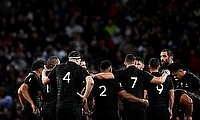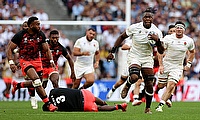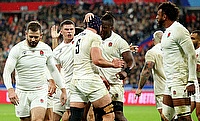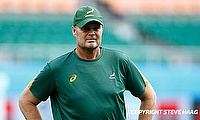Can Pocock and Hooper coexist?
Whilst nations all around the world search for an openside flanker capable of dominating the breakdown for them, Michael Cheika is in the enviable position of picking from three or four genuinely world class options at the position.
Michael Hooper has been extremely impressive since taking over the job from the injury-plagued David Pocock, but with Pocock fit and coming off the back of a stellar Super Rugby season, not to mention excelling thus far in The Rugby Championship, some are now clamouring to see both men in the Wallaby back row.
The question is, however, can both men be accommodated in an international back row and, if so, how will it affect the balance of the Wallabies overall?
There’s no doubt that the combination would be a big boon for Australia at the breakdown. Pocock may be the in-form fetcher in world rugby and although Hooper has not had the impact at the contact area of late that he has become accustomed to, there’s no doubting his ability in that facet of the game.
Both players also make a big impact in the loose, with Hooper one of the more elusive forwards currently playing, whilst Pocock is a physical carrier and a menace at the back of a maul. The positives that the duo would bring are obvious, but unfortunately for Cheika and Australia, the negatives are significant.
Bringing in both players would likely mean having to drop powerhouse lock Will Skelton. The Waratah is an unenviable adversary and often takes two or three men with him when he attacks the defensive line, creating space for those outside of him during the next phase. The drawback of the 23 stone second row though is that, due to his size, he is only a limited option at the lineout.
Skelton had just one lineout take against South Africa in the opening TRC game, with Rob Simmons and Scott Fardy combing for the other 10 lineout takes that Australia managed to grab. Against Argentina, Skelton had no lineout takes whilst Fardy and Simmons were responsible for 100% of Australia’s successful lineouts.
As a third option, playing alongside two proficient lineout jumpers like Simmons and Fardy, Skelton’s limitations are an acceptable sacrifice for the positives he brings, but if Pocock and Hooper were both to be selected, it would likely mean Fardy would have to drop out, making Skelton’s position in the XV untenable.
Skelton would need to be replaced by one of James Horwill or Dean Mumm (or Kane Douglas should his expected return to Australia be completed), and whilst all good options, they don’t bring the same skill set as Skelton, and given the importance of his role within the Waratahs of late, it would be surprising if Australia don’t want to use him in a similar fashion.
Even with Skelton replaced with a more adept lineout forward in the second row, Australia’s lineout options would still be limited with neither Hooper nor Pocock regular contributors at club level, let alone international. It would make Scott Higginbotham a very strong candidate to start at number eight, with the Rebel a useful target at the set-piece, but also potentially rules out the selections of Wycliff Palu, Ben McCalman and Ita Vaea at the position, particularly for crunch Rugby World Cup matches against well-drilled set-piece sides such as England and Wales.
There are of course other variables that could come into play, such as moving Fardy to eight to accommodate Pocock at six, or even moving Pocock to eight himself, allowing Australia to have a designated lineout forward such as Fardy or Mumm on the blindside.
Ultimately, however, the overriding consequence is that the Australian pack would undergo a lot of upheaval should Cheika decide to pick both Hooper and Pocock and it’s not just a simple case of dropping a player to make space for the pair. In fact, given the players it would possibly preclude from selection, it wouldn’t just be a line-up change, but a change to Australia’s overall gameplan.
Of course Cheika should be concerned about the breakdown lesson Australia were taught early on by South Africa, but there’s no doubt that those troubles quickly faded away with the introduction of Pocock in the second half, not to mention that the Brumby helped Australia dominate that same area a week later against Argentina.
Given that Australia’s RWC pool opponents England and Wales will head into the tournament with a bevy of lineout targets in their second and back rows, it’s an area where Australia cannot afford to take too many risks. The dynamic of Simmons and Fardy as main options with Skelton and Higginbotham rotating in and out as third options worked well for Australia against South Africa and all four seemed to have good chemistry with hooker Stephen Moore.
The Wallabies have the breakdown option of Pocock or the running threat of Hooper at their disposal, and whilst having both on the pitch is obviously enticing, it could be too close to the RWC to make such a dramatic change to the Wallaby pack and they may be better served fine-tuning the current balance they have.








